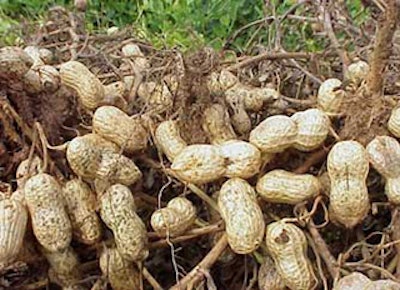
Researchers from the U.S. Department of Agriculture and Oklahoma State University recently debuted a new and improved peanut, with a longer shelf life and greater resistance to disease.
The new variety of peanuts -- called OLé -- also contains elevated levels of oleic acid, a monounsaturated fatty acid linked to several health benefits.
Spanish peanuts contain high levels of oil, but seed stock contamination and logistical problems led to a shortage of the crop for producers of salted peanuts, peanut butter and peanut candy. The relatively high amounts of oleic acid can increase the OLé peanuts' shelf life ten-fold, since the acid contains fewer double carbon bonds that can break down and become rancid.
"The peanut industry [found itself] in urgent need of a replacement high-oleic Spanish cultivar with acceptable seed size, yield and disease resistance package," said biologist Kelly Chamberlin of the USDA's Agricultural Research Service.
Chamberlin predicted the new peanuts would help agriculture, processors and consumers alike.
Peanut farmers, in particular, could save up to $150 per acre on pesticide costs because the OLé crops resist the devastating Sclerotinia blight and pod rot fungi.





















